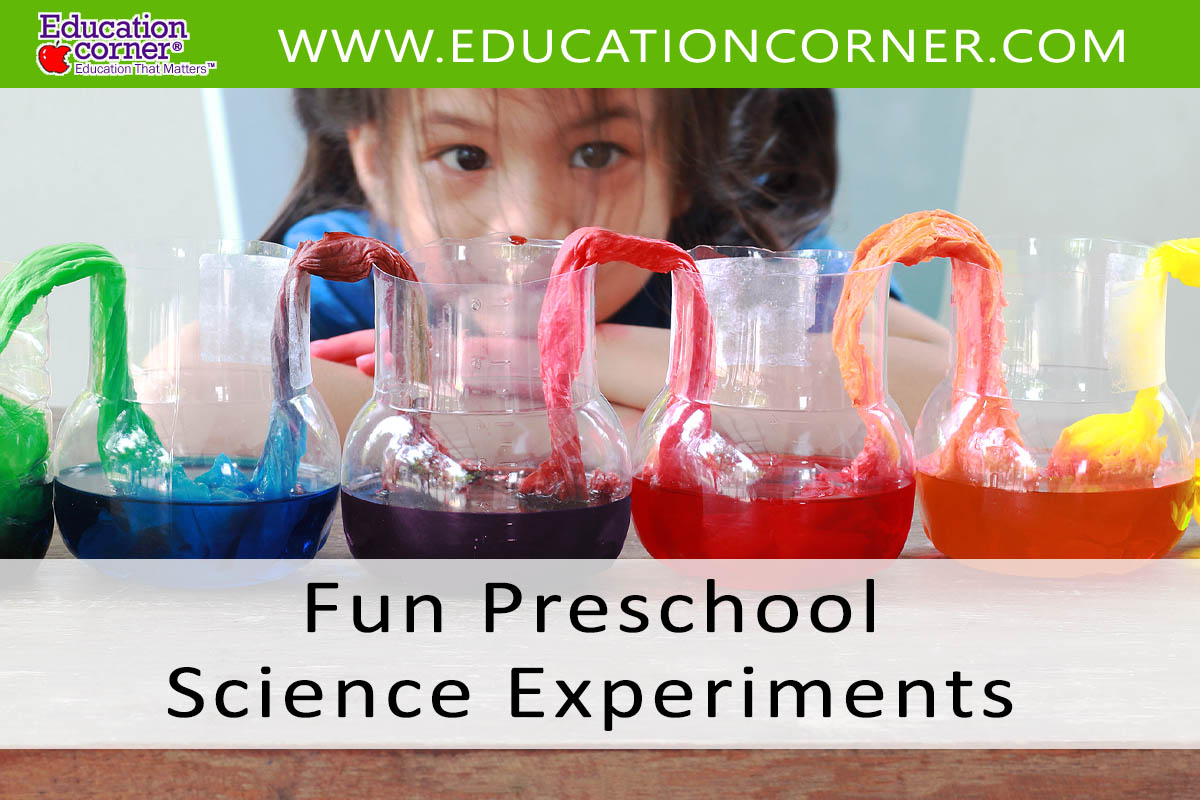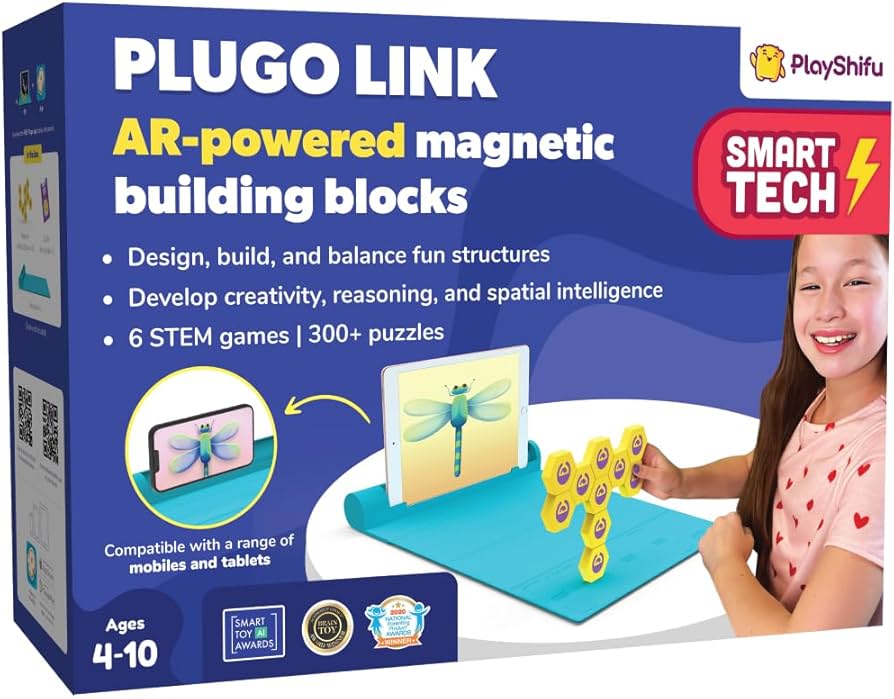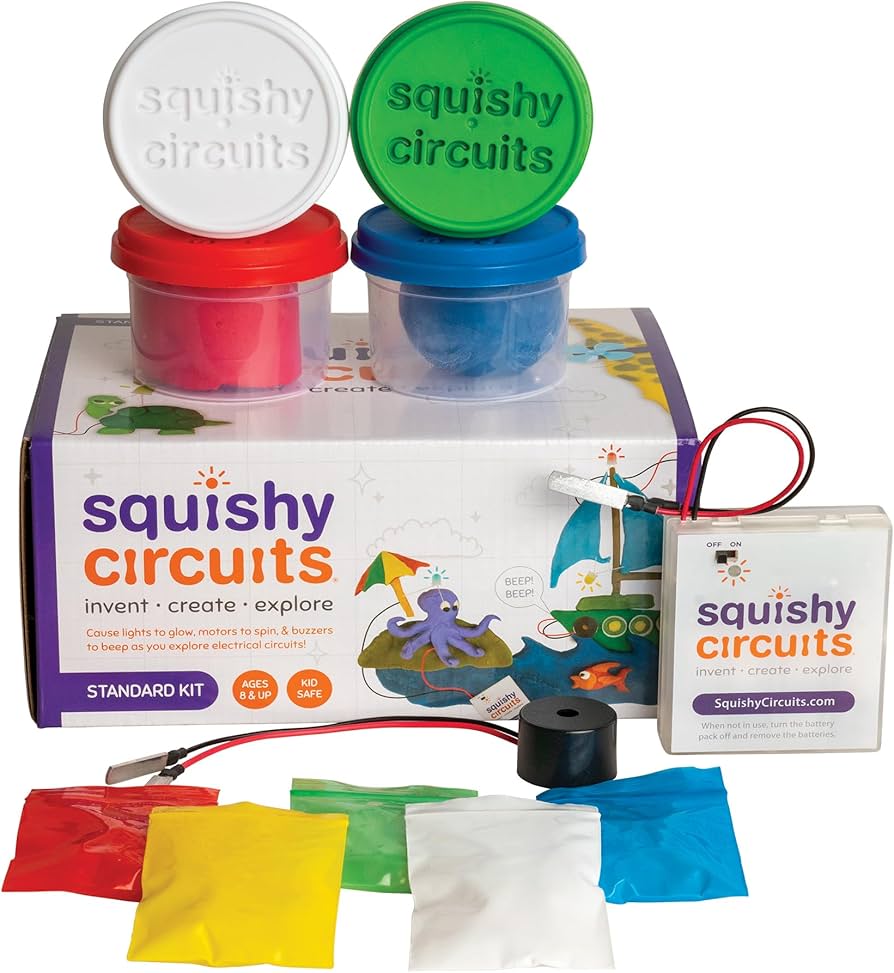Science projects preschoolers’ choice links can be fun and highly educational. These can be little projects or experiments that promote curiosity and allow users to learn by doing.
All young children are naturally inquisitive. They love to discover their environment. Science projects can harness that curiosity. Simple experiments can help them learn about the world. The same goes for critical thinking skills. Practical work makes learning fun.
Best of all, you can do these projects using ordinary materials. It is also cheap and easy for parents and teachers. Science projects captivate young minds, whether they’re watching a plant grow or mixing colours. They provide the basis for a passion for learning. Now, let’s jump into the fantastic world of preschool science projects!

Credit: pencilstopigtails.com
Introduction To Science Projects
Science projects for preschoolers are an ideal way to promote a lifelong love of learning. These are not merely fun activities. They are the initial steps to perceiving the world. You can learn powerful lessons in simple experiments. Kids get interested in and excited about science.
Benefits Of Early Science Education
Science education from an early age has many benefits. Children acquire critical thinking skills. They learn to ask questions & look for answers. Science projects enhance creativity too. There’s imagination involved in solving problems from a child’s perspective. It develops fine motor skills through hands-on activities. Physical items like these are enormously helpful for kids to learn through touch, construction and experiments.
This early science education creates a solid foundation. Kids are becoming more secure in their abilities. They are more ready for academic challenges in the future. Children who engage with science early on tend to develop a more positive attitude towards learning. Kids start thinking that science is fun and exciting.
Engaging Preschoolers In Science
And it doesn’t necessarily take fancy materials to get preschoolers excited about science. Try small experiments first. Use everyday household items. Colour mixing or sprouting seeds and watching plants grow can hold their wonder. Keep Make Yourself projects to a short and interactive duration. This works to hold their focus.
Fostering curiosity: When children ask questions, Give them space to explore and discover. Encourage what they do and reward what they achieve. Use books and videos to generate interest. Explain to them the science of their daily lives. How do we make science learning fun? Also, read about our Online Degree Programs.
But parents and teachers have central roles. They help to guide and support the children. Scientists share general principles—but the right approach can make preschoolers enthusiastic about being scientists. Those experiences early in life can impact them for life.

Credit: preschoolpowolpackets.blogspot.com
Simple Chemistry Experiments
Exploring simple chemistry experiments is a fantastic way to spark curiosity in young minds. Preschoolers can learn a lot from these hands-on activities. They are safe, easy, and fun. Let’s dive into some simple, engaging experiments that you can do at home or in the classroom. Read about Hands-On STEM Projects.
Baking Soda And Vinegar Volcano
The baking soda and vinegar volcano is a classic experiment. It demonstrates a simple chemical reaction. Here’s how you can create your mini volcano:
- Materials: Baking soda, vinegar, dish soap, food colouring, a small container, and a tray.
- Instructions:
- Place the container on the tray.
- Fill the container halfway with baking soda.
- Add a few drops of dish soap and food colouring.
- Pour vinegar into the container and watch the eruption!
This experiment showcases the reaction between baking soda and vinegar. The dish soap helps create foam, making the eruption more exciting. This activity is not only fun but also educational.
Magic Milk
The magic milk experiment is another favourite among preschoolers. It involves simple ingredients and creates a burst of colours. Here’s how you can perform this magical experiment:
- Materials: Whole milk, food colouring, dish soap, and a shallow dish.
- Instructions:
- Pour milk into the shallow dish.
- Add drops of different food colouring around the milk.
- Dip a cotton swab into dish soap.
- Touch the milk with the soapy swab and observe the colour explosion.
This experiment demonstrates how soap breaks the surface tension of milk. The colours swirl around, creating beautiful patterns. It’s a perfect way to introduce preschoolers to introductory chemistry concepts. Plus, it’s visually stunning and very engaging.

Exploring Biology
Exploring biology with preschoolers can be both fun and educational. Young children are naturally curious about the world around them. Hands-on activities help them understand complex concepts. In this section, we’ll explore two exciting biology projects. These projects will foster a love for science in your little ones.
Planting Seeds
Planting seeds is a perfect project for preschoolers. They get to see how plants grow from tiny seeds. Start with a few simple supplies. You’ll need soil, seeds, and small pots. Let the kids fill the pots with soil. Then, help them plant the seeds. Water the seeds regularly and place the pots in sunlight.
Children will learn about the needs of plants. They will watch as the seeds sprout and grow into plants. Discuss the different parts of the plant. Roots, stems, leaves, and flowers. This activity helps kids understand the life cycle of a plant.
Butterfly Life Cycle
The butterfly life cycle is fascinating for preschoolers. It shows the stages of metamorphosis. You can start with a caterpillar or a butterfly kit. Observe the caterpillar as it eats and grows. Soon, it will form a chrysalis. This is a great time to talk about what is happening inside the chrysalis.
After some time, a beautiful butterfly will emerge. Explain the life cycle stages: egg, caterpillar, chrysalis, and butterfly. Release the butterfly into the garden. This project teaches kids about change and growth in nature.

Credit: www.educationcorner.com
Physics For Preschoolers
Preschoolers and kids forget things a lot, so at the same time as they forget, I latch on to a lot of them. Begin with the most straightforward ideas that capture the imagination. Make it creative with fun activities and practical work. This aids in helping young minds easily absorb basic principles without feeling too pressured.
Gravity With Falling Objects
Gravity is an excellent place to start. Gravity pulls things down to the ground, so objects fall. Use things such as balls, feathers, and paper. Have the children drop these items from varying heights. You can even see which falls faster and why. Make it clear that gravity is a signal for everything.
To make it more interactive, have the children pick up and drop the objects. Ask them questions. Why does the ball land faster than the feather? This promotes critical thinking. They learn by doing and by watching. It’s simple yet effective.
Building Simple Machines
Simple machines are another great topic. Concentrate on levers, pulleys and ramps. Use simple materials such as spoons, string and cardboard. Use a board and a block to build a miniature seesaw. Lifting up one side pulls the other side down.
Then make a simple pulley with a piece of string and a spool. Use the pulley to lift something small. All together, explain what makes it easier to lift. These are simple demonstrations of basic principles of mechanics. Children are able to see and touch the machines. It brings the concepts down to earth.
Interactive Earth Science
Interactive Earth Science projects can spark curiosity in preschoolers. These activities are fun and educational. They help kids learn about the world around them. Hands-on projects make learning exciting. Let’s explore some engaging Earth Science activities.
Rock And Mineral Collection
Kids love collecting rocks. It is a great way to introduce them to geology. Start with a nature walk. Let them pick up interesting rocks. You can create a rock and mineral collection at home. Display the rocks in a box or on a shelf.
Label each rock with its name. Use simple terms like “smooth” or “rough” to describe texture. Teach them about different types of rocks. Use a table to sort rocks into groups.
| Type | Example |
|---|---|
| Igneous | Granite |
| Sedimentary | Sandstone |
| Metamorphic | Marble |
Encourage your child to touch and feel the rocks. Ask questions like, “Is it heavy or light?” or “What color do you see?” This helps them observe and think critically.
Weather Observation
Weather observation is another fun project. It helps kids understand the weather. Start by creating a simple weather chart. Use a calendar and stickers. Each day, let your child observe the sky. They can use stickers to mark the weather.
Teach them about different types of weather. Use symbols to represent sunny, rainy, cloudy, and windy days. You can also create a daily weather journal. Write down the weather observations.
- Sunny
- Rainy
- Cloudy
- Windy
Discuss the weather changes. Ask questions like, “Do you need a coat today?” or “Can we play outside?” This makes learning about the weather practical and fun.

Creative Art And Science
Creative art and science can create a fun learning environment for preschoolers. They get to explore colours, shapes, and textures. Hands-on activities engage their curious minds. This blend of art and science helps them understand the world better.
Colour Mixing With Paints
Mixing colours with paints is a simple yet exciting activity. Children learn about primary and secondary colours. Please provide them with red, yellow, and blue paints. Please encourage them to mix these colours. They can create new colours like green, orange, and purple. This activity helps them understand colour theory. It also enhances their fine motor skills. Plus, it’s a lot of fun!
Building Structures With Blocks
Building structures with blocks can be both creative and educational. It helps children understand basic engineering concepts. They learn how different shapes and sizes work together. Give them various blocks to build towers, houses, and more. This activity improves their spatial awareness. It also boosts their problem-solving skills. They discover which structures are sturdy and which are not. This hands-on experience is invaluable for their learning.
Technology And Engineering
Introducing preschoolers to technology and engineering can spark curiosity. These activities promote problem-solving and critical thinking. They also lay a foundation for future STEM learning. Hands-on projects make concepts easier to grasp and retain. Let’s explore a couple of engaging projects.
Constructing Simple Circuits
Simple circuits are a fun way to teach basic electronics. Gather batteries, small bulbs, and wires. Show how electricity flows in a loop. Connect the battery to the bulb using wires. Watch the bulb light up. This visual demonstration excites young minds. They learn how everyday devices work.
Diy Marble Run
Create a marble run using household items. Collect paper tubes, tape, and a cardboard base. Design a path for the marble. Attach tubes to the base with tape. Test the run by dropping a marble. Adjust the tubes to change the path. This project teaches engineering principles. It also improves fine motor skills.
Tips For Parents And Educators
Preschoolers are doing science projects that can spark a love of learning. This type of analysis also develops critical thinking skills at an early age. The role of parents and educators is critical to this process. Here are some tips to help you have a successful experience.
Creating A Safe Learning Environment
Safety is the first priority. Just make sure to use non-toxic and child-safe materials. Beware of small objects that may pose a choking hazard. Supervision is key. Never leave kids alone when they are doing a science project.
Organize the workspace. A clutter-free area reduces risks. Use protective gear, such as aprons or gloves, if necessary. Educate children about safety rules. Make sure they understand why these rules are essential. This will help them develop a sense of responsibility.
Encouraging Curiosity And Questions
And if you have children, you know they’re curious. Urge them to ask questions. Respond to their questions in layman’s terms. It captivates them and makes them want to learn in detail. Start by asking the kids open-ended questions to engage their imaginations.
Examples of questions might be:
- Let’s imagine what would happen if we combined these colours.
- Why do you think that this plant needs sunlight?
- The Toy Car, However, can we make this toy car go faster?
These are critical thinking questions. Permit children to try out various outcomes. This practical experience is priceless.
| Tip | Description |
|---|---|
| Provide simple explanations | Use easy language to explain concepts. |
| Be patient | Give children time to process information. |
| Celebrate efforts | Praise their attempts, not just results. |
Conclusion And Future Learning
Preschool science projects ignite curiosity in young minds. These projects lay the foundation for a lifelong love of learning. They help children explore the world around them in a fun and engaging way. But what’s next? How do you keep this momentum going?
Fostering Lifelong Interest In Science
Foster a love of science for life by providing a learning environment. Encourage questions. Celebrate curiosity. Be sure the science is active and fun. The approach works as a great introduction to studying science as a subject of everyday life.
Consider incorporating science into daily routines. For instance:
- Cooking: Talk about how ingredients change when heated.
- Gardening: Discuss plant growth and needs.
- Weather: Explain simple concepts like rain and sunshine.
These activities make science relatable. They help children understand that science is everywhere.
Next Steps In Science Education
Preschool and beyond, keep building off of that. Try to introduce more structured science activities. Use simple experiments to illustrate basic ideas. Take it step by step so it is straightforward and fun.
Consider these following steps:
- Incorporate simple tools such as magnifying glasses.
- Learn about fundamental topics like magnets and their characteristics.
- Go on nature walks and observe and discuss plants and animals.
Join local scientific clubs or museums. They have dedicated programs that are not just for older students. Those resources offer fresh experiences and enhanced learning.
Remember to be patient. The nature of learning science is a journey. Encourage ongoing exploration and celebrate small successes.
Frequently Asked Questions
What Are Easy Science Projects For Preschoolers?
Easy science projects for preschoolers include simple experiments. These can involve everyday materials like water, baking soda, or plants. Activities like growing seeds, mixing colours, or making a volcano are engaging and educational. These projects are fun and promote learning.
How Do You Teach Science To Preschoolers?
Teach science to preschoolers through hands-on activities. Use simple experiments and interactive play. Encourage curiosity and ask open-ended questions. Make learning fun and engaging with real-world examples. Use everyday items to demonstrate basic scientific concepts.
Why Are Science Projects Important For Preschoolers?
Science projects are important for preschoolers because they promote curiosity and critical thinking. They help develop problem-solving skills and understanding of the world. These activities make learning fun and interactive, fostering a love for science early on. Hands-on projects also improve fine motor skills.
What Materials Are Needed For Preschool Science Projects?
Materials for preschool science projects include everyday household items. Standard items are baking soda, vinegar, water, food colouring, and plants. Simple tools like measuring cups, spoons, and jars are also useful. These materials are safe, inexpensive, and easy to find.
Conclusion
Science projects for preschoolers provide fun learning experiences. They spark curiosity. Kids explore the world around them. Simple experiments teach basic scientific concepts. These activities encourage creativity and problem-solving. Parents and teachers can easily set up these projects. They require minimal materials.
Little ones will be excited to learn. Time spent on these projects strengthens bonds. It makes learning enjoyable. Keep science fun and engaging. Watch your preschoolers grow and thrive. Happy experimenting!


